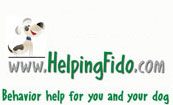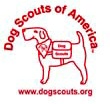Delicious for us, Dangerous to Dogs;
Foods to Keep Away From Your Dog
By Julia Szabo
Most of us who live with animals know that chocolate and dogs do not mix. But there are many other harmful
foods lurking in our pantries and fridges – seemingly innocent vegetables, fruits, and other edibles that may be delicious
to us, but are dangerous, and even deadly, to our dogs.
To learn more about what foods are and aren’t safe for dogs to share with us, we consulted veterinary
nutritionist Joan Weiskopf, author of Pet Food Nation: The Smart, Easy, and Healthy Way to Feed Your Pet Now (Collins). A
breeder of champion Bedlington terriers, Weiskopf is a font of information on the subject of what foods are and aren’t
safe for dogs to eat, and has a thriving business consulting by telephone with clients about individual canine diets.
Take onions and garlic, for instance. These culinary staples are used to create any number of delicious recipes
from all over the culinary map. The trouble is that onions and garlic cause serious health problems in dogs. "Onions and garlic
both contain N-propyl disulfide, which destroys red blood cells, leading to hemolytic anemia," Weiskopf says. And despite
garlic’s longstanding reputation as a flea repellent, "There really is no scientific proof that garlic prevents fleas."
(What really works to prevent fleas is Neem oil.)
What if Spot scores a bite of the kids’ pizza, or a lick of Ragu spaghetti sauce? Or what if you’ve
made chicken soup with onions, and you’d like to ladle some over your Friend’s bowl? Don’t panic, Weiskopf
advises. "Nothing’s going to happen. What you don’t want to be doing is chopping raw onions into your dog’s
bowl! A little onion or garlic is fine once in a while; a lot is not a good thing."
Be careful with onion and garlic powders, as well, or any product containing them (i.e. chips), for besides
being more concentrated, powdered onion and garlic also contain salt. "Salt preserved with anti-caking agents is bad," Weiskopf
says. "I prefer Celtic sea salt because a little goes a long way, plus it contains all kinds of good microtrace nutrients.
But sugar is a no." Red pepper, on the other hand, is good for dogs with arthritis because of the Capsaicin it contains; other
spices recommended for dogs with joint swelling are "all the yellow spices: turmeric, cumin, and curry," Weiskopf adds.
If you’re a cooking buff with a regular habit of setting saucepans and plates on the floor for Spot
to lick clean (also known as the "pre-wash" cycle in dog-friendly kitchens), you could be compromising his health if you cook
certain other veggies. "Dogs - and humans - with arthritis should be careful about overloading on nightshade vegetables, as
they aggravate arthritic conditions," Weiskopf points out. "The nightshade vegetables - so called because they mature at night
- include green peppers, eggplants, potatoes, and tomatoes."
Raisins and grapes are forbidden fruit, for they can cause kidney failure in dogs; sadly, many pets have died
from ingesting raisins. Although it’s not known exactly why grapes and raisins don’t agree with dogs, Weiskopf
has a theory: "Grapes are a heavily sprayed crop, and since so many grapes are coming from Chile, I suspect there’s
a pesticide that’s causing problems for dogs. Also, raisins are preserved with sulfites, which cause allergic reactions
in many dogs." (Be wary of foods preserved with nitrates, as well, such as sausages and bacon; delicious as these are, they
too can trigger allergic reactions in dogs.)
"Legumes such as soy products and beans contain phytate, which inhibits the digestion and absorption of other
vital nutrients – including your dog’s important minerals," Weiskopf says. "If you’re going to feed legumes
of any kind, such as chickpeas or lima beans, at least make sure they’re well-cooked, because that does help; it’s
much worse if your dog eats these raw."
Many seasoned snackers – especially the vegetarians in our midst – keep on hand a supply of that
hugely popular chickpea dip known as hummus. Again, don’t panic if Spot helps himself to some. "If you’re eating
crackers and hummus and your dog gets one, don’t worry that you’ve harmed your dog – just don’t let
him ingest huge amounts of legumous vegetables."
Meanwhile, if Italian food is on the menu and you’re letting your pet participate in pasta preparation,
make sure Spot does not take his al dente. "Always overcook grains and pasta when you feed them to dogs, because they don’t
have the starch-digesting enzymes that we do," Weiskopf explains. "It’s best to overcook any grain material that you
feed your dog, including rice."
On the road to and from grandmother’s house for a holiday feast, the fast-food signs are bound to beckon.
"If you’re stopping for a bite at McDonald’s or KFC, I don’t have a problem with giving the dog some chicken
– just peel off the skin, because it’s got all kinds of spices in it. Another acceptable road food option is the
McDonald’s Filet of Fish sandwich."
In fact, "fish is absolutely fabulous for dogs," Weiskopf says, "and you should include the skin because in
and under the skin is where the majority of the Omega 3 is stored, and you want your dogs to have Omega 3s. Deep, cold water
fish are best: salmon, mackerel, sardines. Anchovies are too salty."
Thanksgiving has its own caveats. Don’t let your dog lick the turkey-roasting pan – "that’s
the surefire way to give a dog a pancreatitis attack," Weiskopf says. "You can pour a tablespoon of drippings over your dog’s
food, but do not let him lick the pan clean." Carved turkey meat and small bits of skin are fine dog treats; cooked turkey
bones are not. If you’re not planning to use the turkey neck for another culinary purpose, such as gravy, offer it raw
to your dog as a special holiday treat – but first, dip it in boiling water for 10 seconds to kill surface bacteria.
Cranberries are fine, but avoid canned cranberry as it’s high in sugar. Sweet potatoes are also fine; just take care
never to serve your dog raw skin off any potato.
Upon graduating from puppyhood, dogs start to resemble lactose-intolerant people. "After infancy, dogs lose
the enzyme Lactase, which helps them digest milk products," Weiskopf says. "Feeding milk products to dogs and cats can cause
gastric distress. However," she adds, "feeding them fermented milk products such as yogurt and buttermilk are fine for dogs;
they don’t usually distress the animal’s system.
For those who just can’t resist giving dogs ice cream, go ahead – in moderation. "You can give
them some ice cream; a little bit isn’t going to hurt," Weiskopf says. "But if you notice your dog gets gastric distress,
don’t do it again." And of course, avoid any ice cream flavor that contains chocolate, chocolate chips, or raisins





